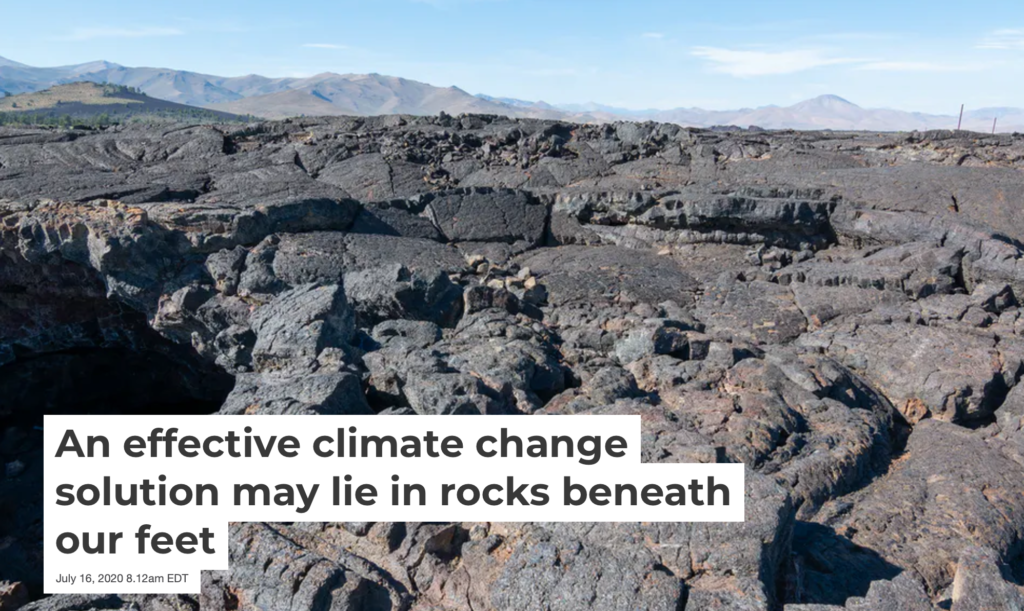What's New
Solutions to climate change will come in sorts of shapes and sizes

Photo credit: The Conversation
This article is from the higher-tech side of carbon sequestration solutions and features a process of storing carbon by cooling and pressurizing CO2 and then injecting it with water deep into the earth’s crust where it will react with silicates to form magnesium and calcium carbonates. These are minerals (rocks) that permanently store carbon deep below the Earth’s surface. This process sounds kind of amazing and turns what can take 1000’s of years into 2 years.
Turning CO2 into rock is the right idea for long-term storage. Let’s capture carbon and forget about it.
While pressurizing CO2 to supercritical states isn’t easy or low cost, CW Grow uses the same chemical reaction of enhanced or accelerated weathering on the surface of wollastonite particles just by spreading it on the soil. When CW Grow reacts with naturally forming acids in the rain and the soil. Natural acids form in the rain or soil-water by absorbing CO2 from the air. Free calcium reacts with acid (containing the CO2) creating strong chemical bonds for long-term storage. After the wollastonite reacts with the natural acids, calcium carbonate is formed and this small molecule is washed down into the soil for permanent storage.
Back to the article at hand, it is a good read with nice visuals and a great overview of the processes for carbon mineralization, turning carbon into rock. Awareness continues to build as more and more solutions are being developed to leverage accelerated or enhanced weathering, nature’s ‘climate change corrector’.
For billions of years, the same reaction that stores carbon by injecting CO2 into the earth or spreading CW Grow on your soil has been at work capturing and converting 50,000x the amount of carbon in fossil fuels into rock. These rock minerals are permanently stored in the limestone lining the oceans and the bedrock of many nations.
Pulling carbon into tree and plant growth is a quick and easy solution to capturing carbon. However, carbon storage where the carbon is in a living form requires active management and long-term commitments by humans to ensure the carbon isn’t easily lost again. Turning carbon into rock provides a much higher guarantee that the carbon will stay out of the atmosphere and can be essentially forgotten about. Fix it and forget it.
Believe it or not, after reading this you are now on the cutting edge of climate science because turning carbon into rock with simple chemical reactions is a field that is just starting to burst open.
There is a lot more work to be done. However, the initial results in our studies and those completed around the world, consistently show high levels of permanent carbon capture using the same strategy with different rocks and geographic areas.
